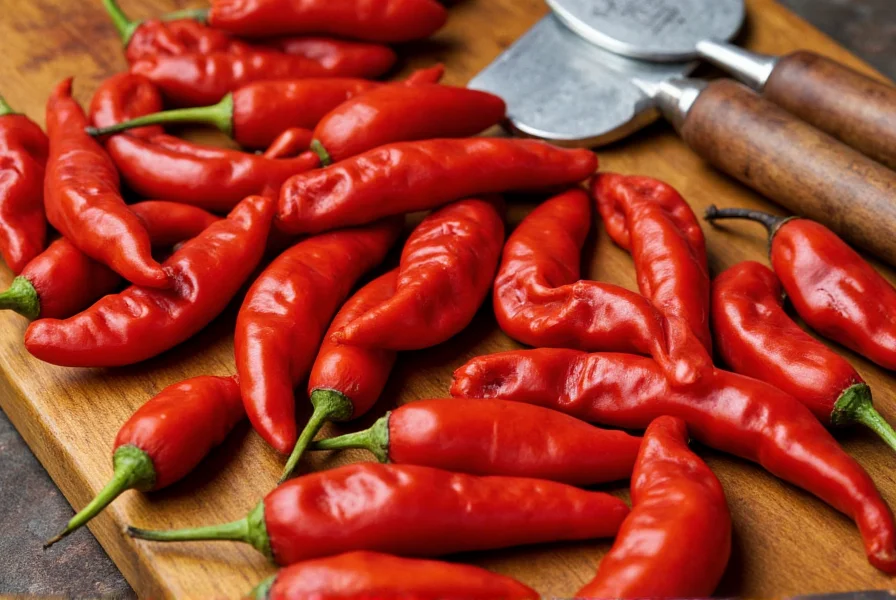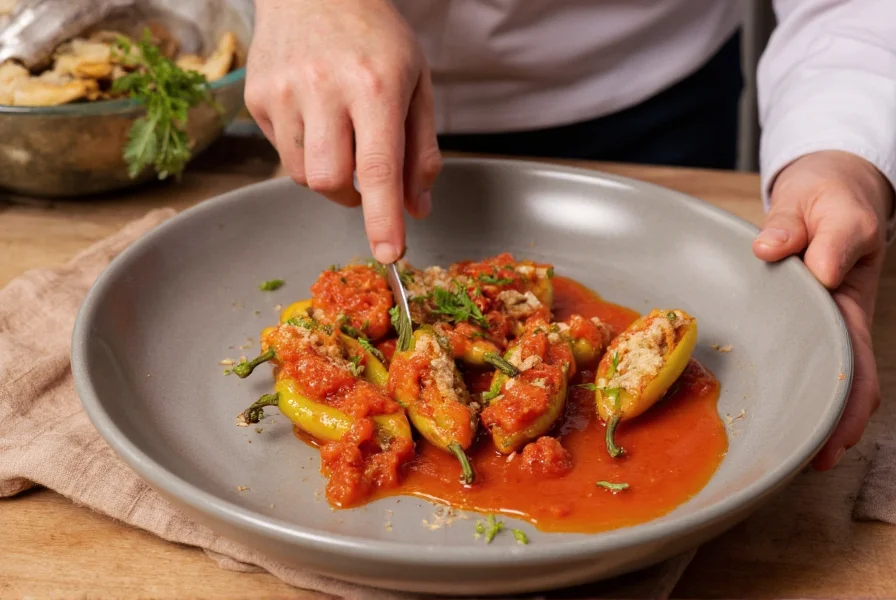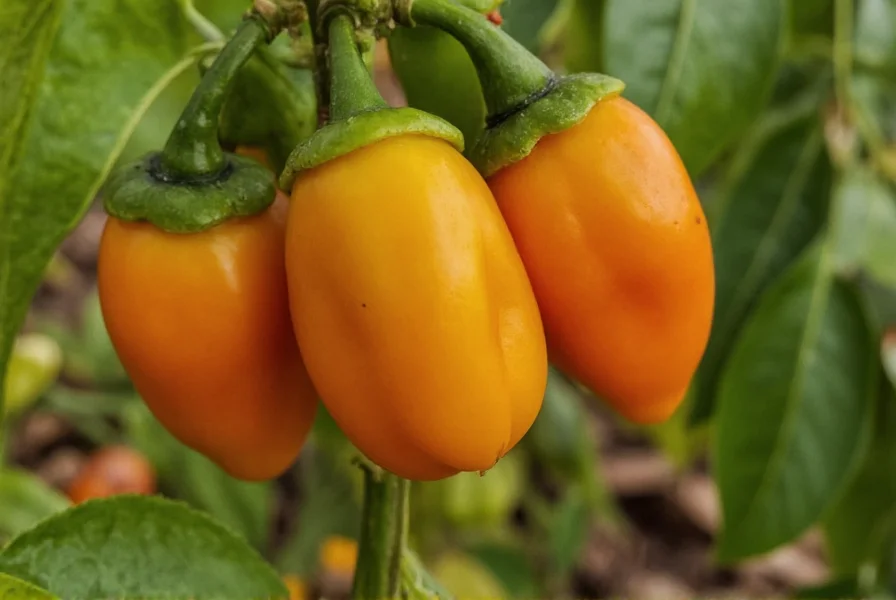When exploring Spanish cuisine, few ingredients capture the essence of regional cooking quite like piquillo peppers. Often misspelled as piparras pepper, these vibrant red peppers have become culinary treasures both in their homeland and internationally. Understanding their unique qualities helps home cooks and professional chefs alike elevate their dishes with authentic Spanish flavors.
Origin and Historical Significance
Piquillo peppers trace their roots to the La Rioja and Navarra regions of northern Spain, where they've been cultivated for generations. The name "piquillo" means "little beak" in Spanish, referring to their distinctive tapered shape. Traditional harvesting methods involve hand-picking these peppers at peak ripeness during late summer and early autumn.
What sets authentic piquillo peppers apart is their traditional preparation method. Unlike mass-produced roasted red peppers, genuine piquillos are roasted over oak or beech wood fires, which imparts a subtle smokiness that cannot be replicated through mechanical roasting. This artisanal process has been preserved for centuries and remains central to their distinctive flavor profile.
Physical Characteristics and Flavor Profile
Piquillo peppers typically measure 3-4 inches in length with a vibrant red color when fully mature. Their walls are relatively thin compared to bell peppers but thicker than many other sweet pepper varieties. The flesh is tender yet substantial enough to hold fillings without falling apart.
| Characteristic | Description |
|---|---|
| Heat Level | Mild (0-500 SHU) - similar to bell peppers |
| Flavor Notes | Sweet with smoky undertones, subtle earthiness |
| Texture | Tender yet firm, ideal for stuffing |
| Common Forms | Whole, jarred in brine, roasted, powdered |
Culinary Applications of Piquillo Peppers
The versatility of piquillo peppers makes them valuable across multiple culinary applications. Professional chefs particularly value them for:
- Stuffing - Their shape and structure make them perfect vessels for fillings like cod brandade, goat cheese, or spiced rice
- Sauces and spreads - Blended with almonds and garlic for romesco, or pureed for vibrant pasta sauces
- Pizza and flatbread toppings - Offering a sophisticated alternative to standard roasted red peppers
- Tapas presentations - Often served simply with olive oil and herbs as a traditional Spanish appetizer

Where to Find Authentic Piquillo Peppers
When searching for genuine piquillo peppers, look for products labeled "Pimientos de Piquillo de Lodosa" which carries Protected Geographical Indication (PGI) status from the European Union. This certification ensures the peppers were grown and processed in the traditional manner in the designated Spanish region.
For home cooks wondering where to buy piquillo peppers near me, check specialty food stores, Spanish markets, or the international section of well-stocked supermarkets. Many online retailers also offer authentic Spanish piquillos, though imported varieties typically provide superior flavor compared to domestically produced alternatives.
Storage and Preparation Tips
Proper storage maintains the quality of piquillo peppers:
- Unopened jars can be stored in a cool, dark pantry for up to 2 years
- Once opened, transfer to an airtight container and refrigerate for up to 1 week
- For longer storage, freeze in olive oil for up to 6 months
When using jarred piquillos, drain excess liquid but reserve some of the brine for sauces. Pat dry before stuffing to prevent fillings from becoming soggy. For the most authentic experience, try roasting fresh red peppers over an open flame to replicate traditional preparation methods.
Comparing Piquillo Peppers to Similar Varieties
Many home cooks wonder about the difference between piquillo peppers vs roasted red peppers. While both are sweet red peppers, key distinctions exist:
- Shape - Piquillos have a distinctive tapered, beak-like shape versus the more rounded profile of standard roasted red peppers
- Flavor - Authentic piquillos have a more complex flavor with subtle smokiness from wood roasting
- Texture - Piquillos maintain better structural integrity when stuffed
- Origin - True piquillos come specifically from northern Spain
For those seeking substitute for piquillo peppers, roasted red peppers can work in a pinch, though they lack the distinctive shape and nuanced flavor. Some specialty markets offer "piquillo-style" peppers that mimic the traditional variety.
Nutritional Benefits
Beyond their culinary appeal, piquillo peppers offer notable nutritional advantages. They're rich in vitamin C (providing over 150% of daily needs per serving), contain significant amounts of vitamin B6 and potassium, and provide antioxidants like beta-carotene. Their low calorie count (approximately 25 calories per 100g) makes them suitable for various dietary approaches.

Traditional Spanish Recipes Featuring Piquillo Peppers
Exploring authentic Spanish cuisine reveals numerous applications for piquillo peppers. One classic preparation is Pimientos de Piquillo Rellenos de Bacalao (piquillo peppers stuffed with salt cod brandade), a beloved tapas dish. Another traditional recipe combines them with marinated anchovies for a simple yet sophisticated appetizer.
For home cooks interested in piquillo pepper recipes, consider these approaches:
- Blend with roasted garlic and almonds for authentic romesco sauce
- Stuff with spiced goat cheese and herbs for elegant appetizers
- Add to tomato-based sauces for paella or seafood stews
- Chop finely and incorporate into egg salad for sandwiches
Conclusion
Understanding the true nature of piquillo peppers—often misspelled as piparras pepper—opens up new dimensions in Spanish cooking. Their distinctive shape, mild sweetness, and subtle smokiness make them invaluable for creating authentic tapas and elevated everyday dishes. Whether you're searching for where to buy piquillo peppers or exploring traditional Spanish recipes, these versatile peppers offer culinary possibilities that extend far beyond ordinary roasted red peppers.
What exactly are piquillo peppers and how are they different from regular roasted red peppers?
Piquillo peppers are small, triangular-shaped sweet peppers from northern Spain that are traditionally roasted over wood fires. They differ from standard roasted red peppers in their distinctive tapered shape, more complex flavor profile with subtle smokiness, and better structural integrity when stuffed. Authentic piquillos carry Protected Geographical Indication status when produced in their traditional Spanish regions.
Where can I find authentic piquillo peppers and how can I identify them?
Authentic piquillo peppers are typically labeled 'Pimientos de Piquillo de Lodosa' with Protected Geographical Indication (PGI) status. Look for this designation on jars, which indicates they were produced in the traditional manner in northern Spain. They're available in specialty food stores, Spanish markets, and increasingly in well-stocked supermarkets. Imported Spanish varieties generally offer superior quality compared to domestically produced alternatives.
What are the best culinary uses for piquillo peppers?
Piquillo peppers excel as stuffing vessels due to their shape and structure, in sauces like romesco when blended with almonds and garlic, as gourmet pizza toppings, and in traditional Spanish tapas. Their mild sweetness and subtle smokiness enhance both simple preparations like olive oil-drizzled appetizers and more complex dishes like stuffed cod brandade. They maintain their integrity better than standard roasted red peppers when cooked further.











 浙公网安备
33010002000092号
浙公网安备
33010002000092号 浙B2-20120091-4
浙B2-20120091-4